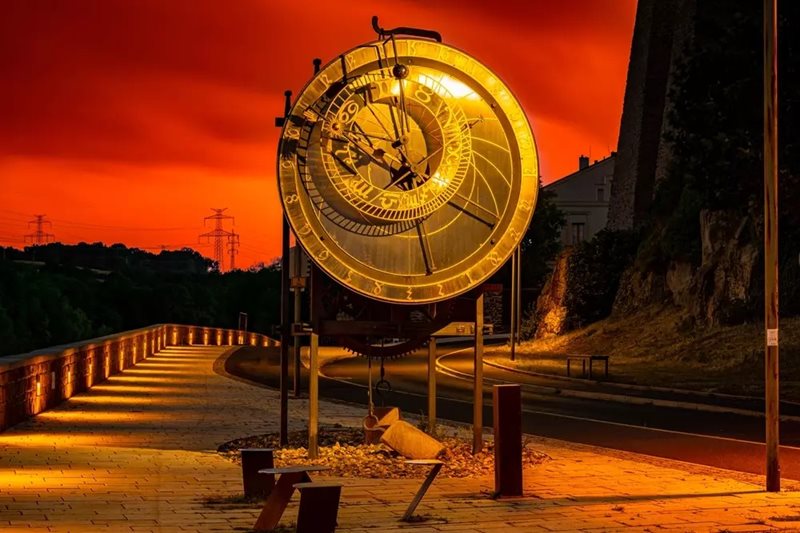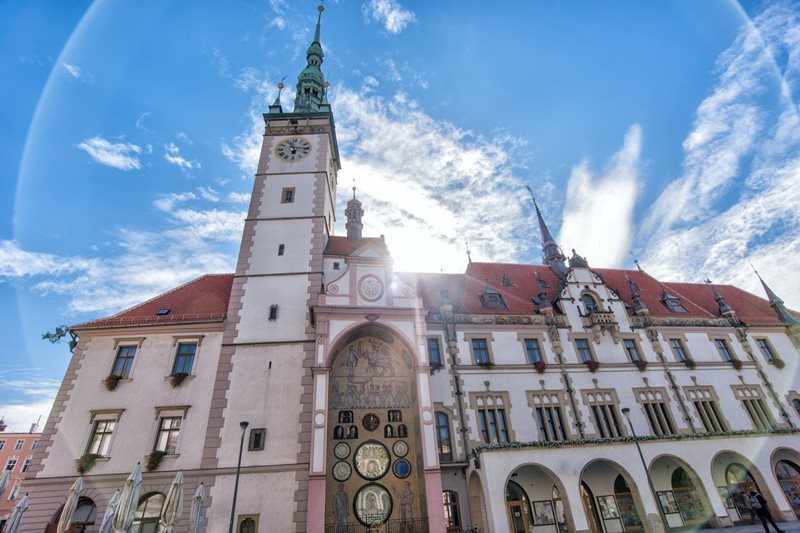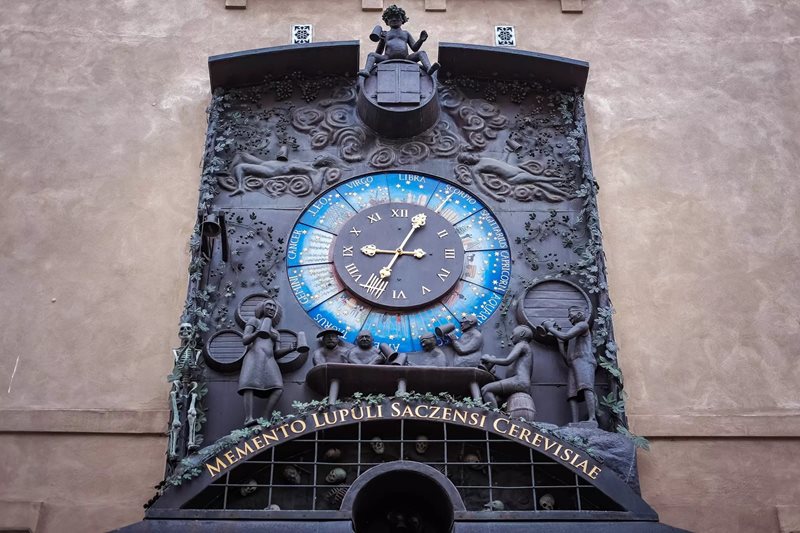A replica of the Old Town Astronomical Clock you can see in the town of Kadaň in Northwest Bohemia. Compared to the original, it is twice as large—measuring over five meters and weighing more than five tons. However, the Kadaň astronomical clock lacks moving parts, as it is a metal sculpture. The clock is open from the back and side, allowing everyone to see exactly what the mechanism looks like from the inside.

2. Brno’s modern astronomical clock strikes noon at 11
The clock on Brno’s Freedom Square (náměstí Svobody) is wholly unique amongst Czechia's astronomical clocks. After all, from a distance it looks nothing like a classic clock. Or even from close up! This six-metre-high black modern timepiece made from polished granite imported all the way from the Republic of South Africa is designed to resemble a historical cartridge case. Wondering why?

It’s because of a famous Brno legend. When the Swedes had spent 4 months besieging Brno in the 17th century, they decided that if they didn’t breach the city walls exactly by the stroke of noon, they would retreat from Brno. However, the people of Brno found out about this plan and cunningly had the clocks strike noon an hour earlier. The Swedish army retreated and since then the noon bell is always rung at 11 o'clock in the Moravian city.
Another legend, which has it that the Swedish general could only be slain by a glass ball cast during a magical ritual and fired at midnight, is symbolised by a part inside the astronomical clock – glass balls. At exactly 11 o'clock every day, they make their way through the bowels of the machine and appear in one of three openings. Anyone lucky enough to catch the ball – only one drops out each day – can keep it as a souvenir.
3. Olomouc’s astronomical clock with its workers and proletarians
Olomouc's historical Town Hall, which stands on Upper Square (Horní náměstí) right by the Holy Trinity Column, a UNESCO Heritage Site, has had an astronomical clock since the 15th century. However, it was badly damaged during World War II and had to be repaired. And as it was restored at the turn of the 1940s and 1950s, its appearance reflects the rise of the communist regime. Rather than saints and other Christian figures, the time it tells is guarded by a labouring worker and joyous farmers. It is probably the only astronomical clock in the world that pays tribute to a chemist, amongst other professions… In the spirit of tradition, the ornamentation also depicts the Ride of the Kings, a UNESCO folk tradition. If you want to take a look at the "remains" of the historical astronomical clock, you’ll find them in the Regional Museum in Olomouc.

4. Hop astronomical clock in Žatec
The town of Žatec in North Bohemia has a history of hop-growing that dates back a thousand years. This unique heritage was also even listed by UNESCO. The tradition of growing outstanding aromatic hops and brewing beer, going back more than 700 years, inspired the creation of an entertaining and educational complex called the Temple of Hops and Beer. It also includes a fully working Hop Astronomical Clock, which tells the time and shows astrological information, the signs of the zodiac and the work done with hops in each month. Every full hour, the clock starts to strike and the objects in the portal move, accompanied by a melody. This is a sight not to be missed!















